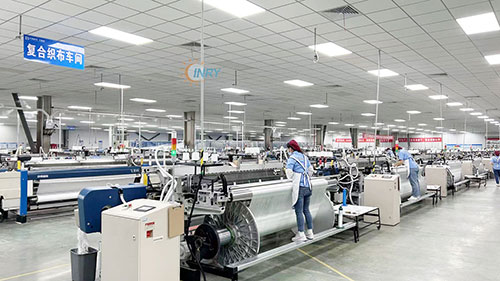E, T, Q and LDK in electronic fiberglass cloth
Overview:Electronic fiberglass cloth is widely used in PCBs. So, what do E, T, Q, and LDK mean in electronic fiberglass cloth? I hope this article's explanation is helpful to you.
In the microstructure of the electronic world, PCBs (Printed Circuit Boards) are an indispensable part, serving as the backbone of electronic devices that supports the connection and interaction of electronic components. During the construction of this backbone, fiberglass cloth plays a crucial role as a key reinforcing material. Today, let's discuss several types of fiberglass cloth commonly used in PCB manufacturing: E-glass, T-glass, Q-glass, and LDK glass.
E-glass sounds very technical; it is actually a type of electronic-grade fiberglass cloth and is currently the most commonly used PCB substrate material. The 'E' in E-glass stands for 'electrical,' indicating its low content of alkali metal oxides, less than 1%, which gives it excellent electrical insulating properties and mechanical strength. In the world of PCBs, E-glass is that silent yet incredibly reliable foundation.
E-glass comes in various specifications, such as 7628, 2116, 1080, etc. These numbers represent the thickness, weight per unit area, and thread density of the cloth. For example, 7628 cloth has a thickness of about 0.173mm and a weight per unit area of about 204.4g/m², making it very popular in PCB manufacturing. On the other hand, 1080 cloth is much thinner, with a thickness of about 0.053mm and a weight per unit area of about 46.8g/m², suitable for applications requiring lightweight and thinness.
T-glass gets its name from the 'T' representing medium-alkali fiberglass cloth. Compared to E-glass, T-glass contains more alkali metal oxides, which makes it better in acid resistance but slightly inferior in electrical insulation performance. T-glass is usually used in environments requiring special corrosion resistance, such as chemical equipment or certain special electronic devices.
Q-glass (Quench glass), where 'Q' stands for high-alkali fiberglass cloth. This type of glass cloth contains more than 15% alkali metal oxides and has characteristics similar to T-glass but superior heat resistance and corrosion resistance. Q-glass typically refers to fiberglass cloth with lower dielectric constant and dielectric loss, suitable for high-frequency circuits. Its characteristic is maintaining low dielectric loss under high-frequency conditions, which is very important for high-speed communication and signal transmission.
Next is LDK glass, possibly the most mysterious among these glass cloths. In PCB manufacturing, LDK glass usually refers to those fiberglass cloths with special properties, such as low dielectric constant (Low Dk) or low loss factor (Low Df). These characteristics are very important for high-frequency circuit boards because they can reduce delay and loss in signal transmission, improving transmission efficiency.
In the PCB manufacturing process, the choice of fiberglass cloth is crucial. Designers need to select the appropriate fiberglass cloth based on the specific use and performance requirements of the circuit board. For example, for ordinary consumer electronics, E-glass can meet most needs. For high-performance servers or communication equipment, low-dielectric-constant LDK glass may be needed to ensure high-speed signal transmission.
The application of fiberglass cloth in PCBs is not just as a reinforcing material; it directly affects the electrical performance and signal transmission quality of the circuit board. For instance, the dielectric constant and loss factor of the fiberglass cloth directly impact the signal transmission speed and loss of the circuit board. Additionally, the thermal expansion coefficient of the fiberglass cloth also affects the dimensional stability of the circuit board at different temperatures.
In high-end PCB manufacturing, optimizing the performance of fiberglass cloth is an ongoing exploration. Manufacturers continuously research how to improve circuit board performance by enhancing the manufacturing process and material formulation of fiberglass cloth. For example, using finer glass fibers to improve the uniformity and mechanical strength of the cloth, or applying special surface treatments to enhance the adhesion between the fiberglass cloth and resin.
Overall, the application of E, T, Q, and LDK glass cloths in PCB manufacturing reflects the significant role of materials science in the electronics industry. Each type of fiberglass cloth has its unique properties and application scenarios supporting the stable operation and performance of electronic devices. As electronic technology continues to advance, the demand for PCB performance increases. Fiberglass cloth, as an essential component of PCBs will continue to be researched and developed to meet the future demands of electronic devices for high performance and reliability.
We have been focusing on the production of fiberglass cloth and related products for over ten years. Our factory has exported various types of fiberglass cloth to nearly 40 countries worldwide and is one of China's largest manufacturers of fiberglass cloth. If you need electronic fiberglass cloth or any other type of fiberglass cloth, please feel free to contact us.





